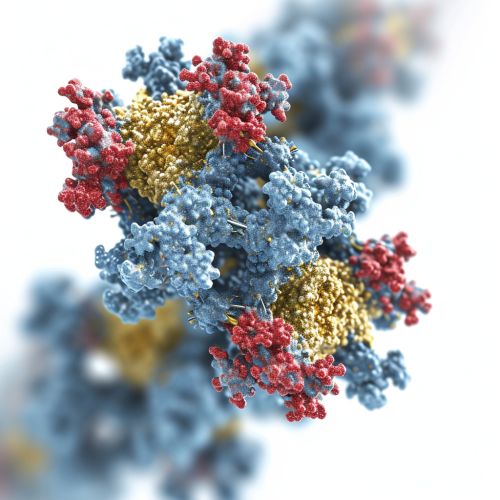TIP60
Introduction
Tat-interactive protein 60 kDa (TIP60), also known as lysine acetyltransferase 5 (KAT5), is a protein that in humans is encoded by the KAT5 gene. TIP60 is a member of the MYST family of histone acetyltransferases (HATs) and plays a crucial role in the regulation of gene expression, DNA repair, cell cycle progression, and apoptosis.
Structure
TIP60 is a multi-domain protein that contains several functional regions. The N-terminal region of TIP60 contains a chromodomain, which is involved in binding to histones and other proteins. The central region of TIP60 contains the MYST domain, which is responsible for the acetyltransferase activity of the protein. The C-terminal region of TIP60 contains a zinc finger motif, which is involved in protein-protein interactions.


Function
TIP60 functions as a histone acetyltransferase, which means it transfers acetyl groups to the lysine residues of histones. This modification of histones plays a key role in the regulation of gene expression. By acetylating histones, TIP60 alters the structure of the chromatin, making it more accessible for the transcription machinery and thus promoting gene expression.
In addition to its role in gene expression, TIP60 also plays a crucial role in DNA repair. It is involved in the repair of double-strand breaks (DSBs) in DNA, which are among the most dangerous types of DNA damage. TIP60 is recruited to the site of DSBs, where it acetylates histones and other proteins to facilitate the recruitment and activation of the DNA repair machinery.
TIP60 also plays a role in cell cycle progression and apoptosis. It is involved in the regulation of the cell cycle, and its activity is required for the progression from the G1 to the S phase of the cell cycle. TIP60 also plays a role in apoptosis, the process of programmed cell death. It is involved in the activation of the p53 protein, a key regulator of apoptosis.
Role in Disease
Alterations in the function of TIP60 have been associated with several diseases, including cancer. Mutations in the KAT5 gene that encodes TIP60 have been found in various types of cancer, including breast cancer, ovarian cancer, and lung cancer. These mutations often result in a loss of function of TIP60, which can lead to dysregulation of gene expression, impaired DNA repair, and abnormal cell cycle progression, all of which can contribute to the development and progression of cancer.
In addition to cancer, alterations in the function of TIP60 have also been associated with neurodegenerative diseases, such as Alzheimer's disease. In these diseases, TIP60 is thought to play a role in the regulation of neuronal survival and death.
Research
Research on TIP60 is ongoing, with scientists seeking to better understand its functions and its role in disease. Current research is focused on elucidating the molecular mechanisms by which TIP60 regulates gene expression, DNA repair, cell cycle progression, and apoptosis. Researchers are also investigating the potential of TIP60 as a therapeutic target in diseases such as cancer and neurodegenerative diseases.
